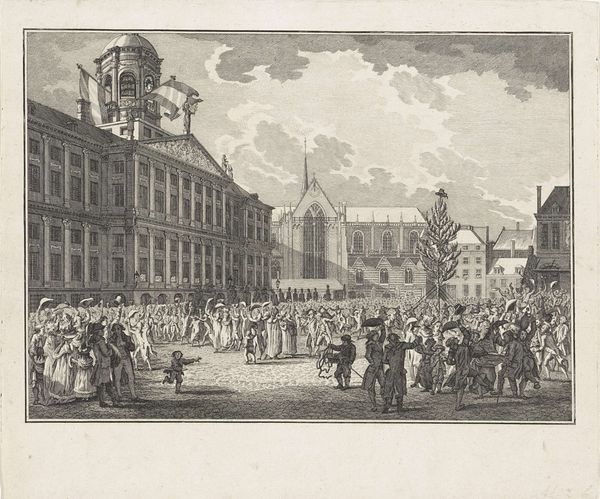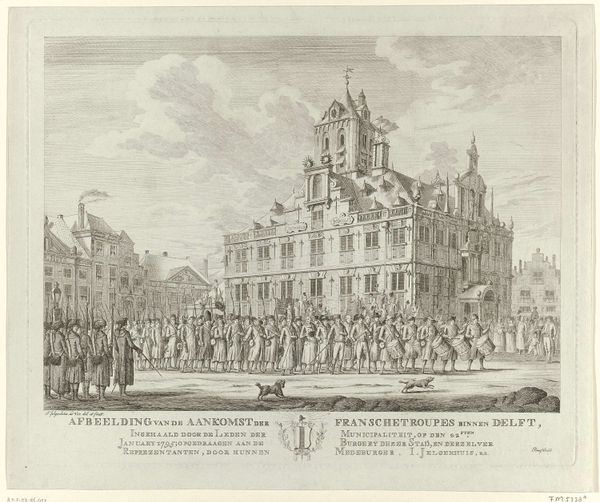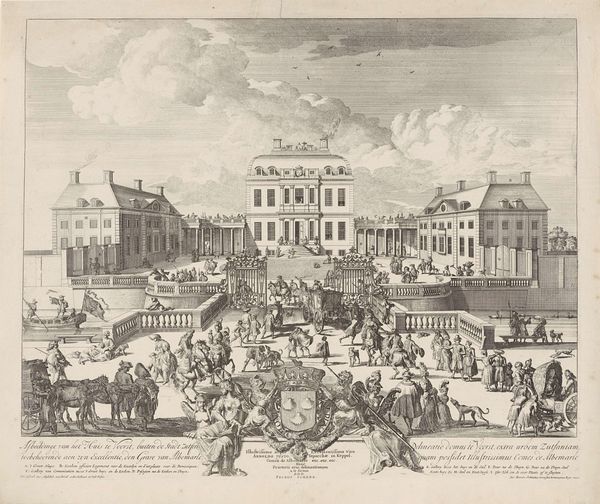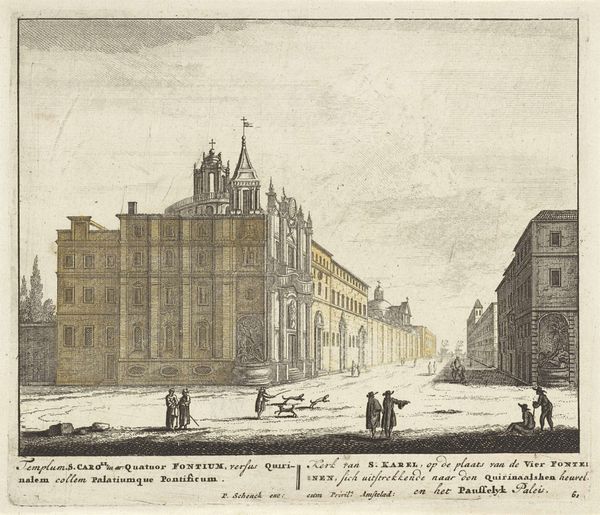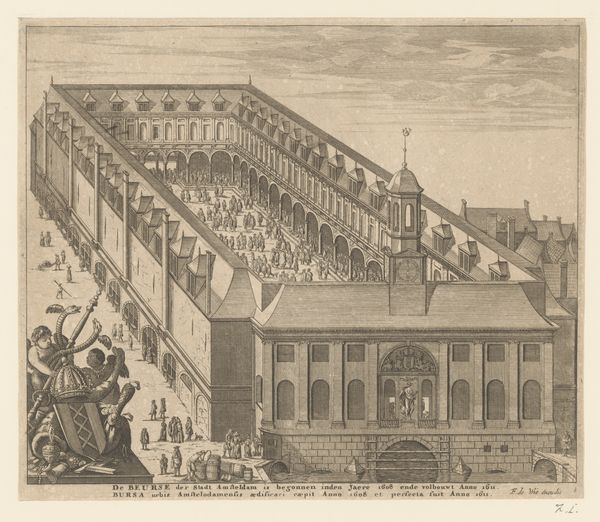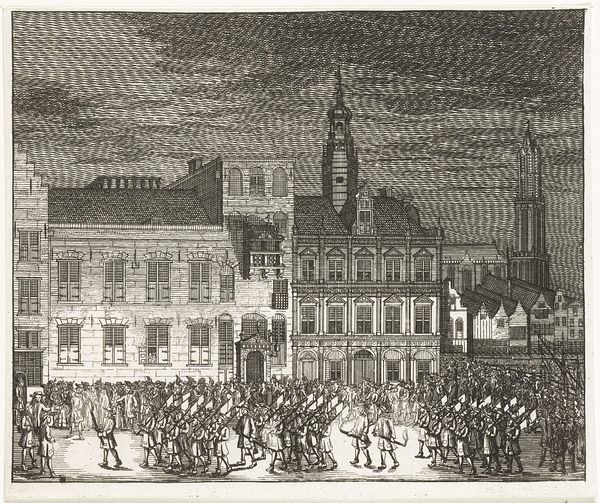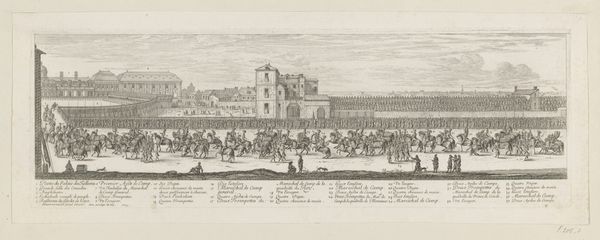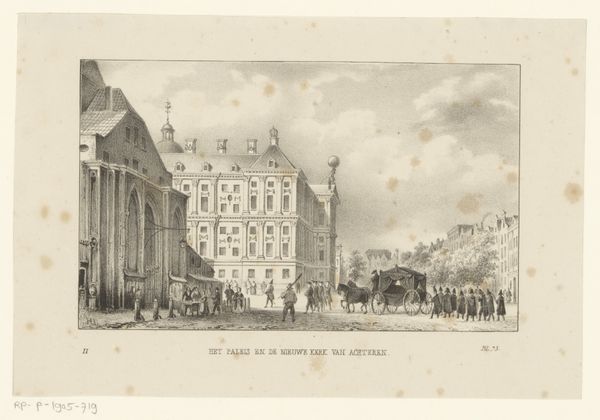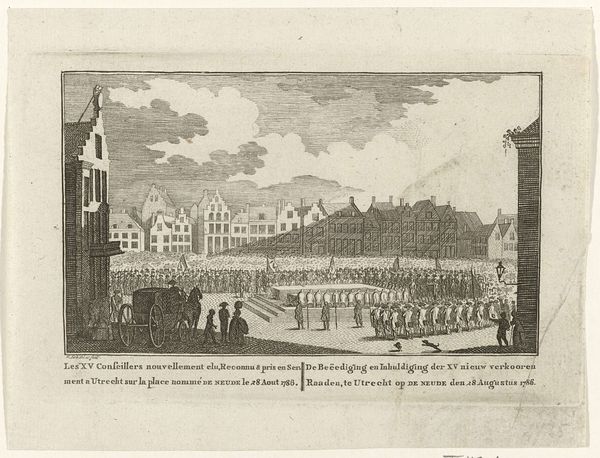
print, engraving
# print
#
old engraving style
#
romanticism
#
cityscape
#
history-painting
#
engraving
Dimensions: height 190 mm, width 249 mm
Copyright: Rijks Museum: Open Domain
Curator: This engraving, titled "Aanval op het kasteel van Vincennes, 1791", was created by Reinier Vinkeles in 1792 and is now held at the Rijksmuseum. What’s your immediate impression? Editor: An organized chaos. There's this stark contrast between the rigid lines of the buildings and the frenzied crowd—makes me wonder if order can ever really contain raw energy. The towers almost seem to be observing with a silent disdain, judging us, maybe? Curator: It certainly captures a pivotal moment. The attack on the Château de Vincennes occurred as revolutionary fervor spread, even though it wasn't as central as the Bastille. People feared it would become another royalist stronghold. Notice how Vinkeles positions the crowd: the march, a somewhat organized army on the bottom-left, leading the spontaneous energy in the bottom-center towards the Château. It’s about the populace seizing control. Editor: But seizing control how? Does the energy seem joyful to you? To me, the dark figures seem sinister; weapons in hand, this attack is ominous in that cloud-ridden atmosphere. Even in an ideal, a revolution, is there violence? Destruction? Curator: Absolutely, and the print doesn't shy away from that tension. Vinkeles was working during a time of massive socio-political upheaval. This engraving exists as both historical document and a kind of propaganda. Visualizing it gives the revolution power. Editor: Propaganda, huh? I can sense it. It makes me wonder: How do you depict chaos elegantly? With calculated composition, the symmetry and measured strokes—even rebellions can get the fine art treatment, right? A bit ironic, I guess. The act itself must've been visceral. Gut-wrenching. I would wonder if an artist, in trying to make it look "pretty", had diluted the initial emotions felt by all those there, the excitement, the trepidation? Curator: An important question. By depicting it, you insert a layer of interpretation that mediates between the event and the viewer, shaping its public meaning. The goal of history-painting isn't only depicting accuracy but also influencing how society remembers that time, creating the collective memory. Editor: Right, creating collective memory! That engraving seems like a pretty tidy way to encapsulate a really messy moment. Almost makes me suspicious about the whole deal, and wonder about how my memory has been molded through depictions just like it. Thank you for sharing; this engraving makes me feel anything *but* complacent. Curator: Precisely the goal. Art's ability to provoke questions and challenge perceptions makes it indispensable, isn't it?
Comments
No comments
Be the first to comment and join the conversation on the ultimate creative platform.
